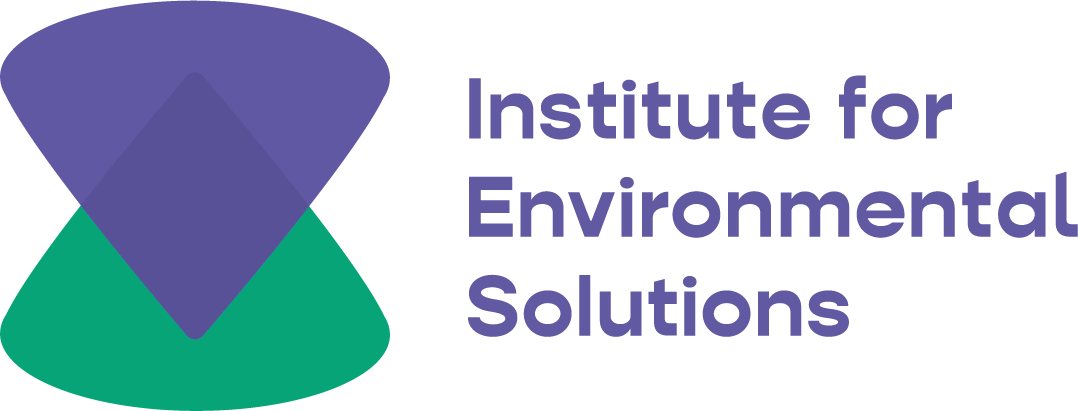Semi-natural grasslands in Latvia nowadays can be considered to be an endangered value of nature. If the grasslands cease to exist, also the unique biodiversity of plant species disappears, as well as a part of Latvia’s past – the flower meadows and blooming pastures that our predecessors sang songs about are a part our national and cultural identity. It is possible, that we are loosing a part of future, too. The products from semi-natural grasslands – meat, milk, honey – are gaining more and more appreciation in the world due to their superb quality and taste. In Latvia this part of semi natural grasslands is still an uncharted territory.
Project GrassLIFE joins together 12 farms in all Latvia and experts of Latvian Fund for Nature, University of Latvia and Institute for Environmental Solutions. Together we will restore semi natural grasslands in 14 territories that are located in Natura 2000 network.
Our aim is to restore 1320 ha of semi-natural grasslands in Latvia.
For restoration we have chosen the territories that are most important for conservation of semi-natural grasslands in general. These are locations where semi-natural grasslands are still existent and where it is possible to create larger territories of grasslands. Thus our work will leave a lasting effect on preservation of biodiversity. We also pay attention to connectivity of restoration territories to ensure migration of seeds and species among the grasslands.
After the restoration it is very important to continue management of grasslands in nature friendly way. The GrassLIFE meadows will be managed by grazing and mowing. In order to ensure continuity of semi-natural grassland management, we will create management infrastructure in the territories, including purchase of cattle and equipment, setting up grazing territories.
Grassland restoration methods used and tested
- Removal of overgrowth – bushes, trees.
- Milling
- Harrpwing and soil alignment
- Mowing or grazing
- Seed transfer
- Sod transfer or transplantation
- Deep plowing
- Removal of soil top coat
Restoration will be carried out by 12 farms together with LFN and University of Latvia.
- removal of bushes
- milling of roots
- improving the composition of species
- restoration mowing
- restoration grazing
- milling of topsoil
- restoration of wooded meadows.
Progress per target habitat:
| Habitats | Restoration target in total, ha | Progress to date, ha |
| 6120* Xeric and calcareous grasslands | 11.9 | 1.3 |
| 6210* Semi-natural dry grasslands, important orchid sites | 167.1 | 31.1 |
| 6230* Species-rich Nardus grasslands | 1.5 | 0.1 |
| 6270* Fennoscandian lowland species-rich dry to mesic grasslands | 406.1 | 323.2 |
| 6530* Fennoscandian wooded meadows | 81.9 | 145 |
| TOTAL | 668.5 | 504 |
Progress per Natura2000 site:
| Site name | Restoration target in total, ha | Progress to date, ha |
| Ziemeļgauja | 148.5 | 127.5 |
| Kuja | 36.8 | 33.7 |
| Augšdaugava | 159.2 | 103.5 |
| Rāznas nacionālais parks | 15.3 | 0 |
| Abavas senleja | 81.9 | 25.8 |
| Ābeļi | 47.4 | 41.8 |
| Sitas un Pededzes paliene | 110 | 108.05 |
| Daugavas ieleja | 20 | 17.9 |
| Mugurves pļavas | 16.5 | 13.8 |
| Lielupes palienes pļavas | 28.3 | 29.7 |
| Ogres ieleja | 4.6 | 0 |
| TOTAL | 668.5 | 504.5 |
To support the long-term management of the restored areas, investments are made in the partner farms, such as purchase of cattle and establishment of grazing infrastructure.
Science is one of the foundations of project GrassLIFE. We conduct research and look for new knowledge on grasslands, grassland restoration and aim to transform it into practical and usable solutions for further management of grasslands. All our recommendations, actions and conclusions are based in scientific research on semi-natural grasslands in Latvia.
It is a fact that in the course of previous decades in Latvia the areas of semi natural grasslands and the amount of species have decreased significantly. The main reasons are the changes in land use, abandonment and overgrowth of grasslands as well as fragmentation of habitats and nutrition overflow in grassland soils.
Therefore the research of semi natural grasslands is closely connected with research of soil as soil factors influence the spatial distribution of these ecosystems, also ecosystem services, distribution of species and biodiversity. The spatial distribution of grasslands is also connected to soil formation processes and soil properties, soil fertility and the quality of land. These are very important aspects for sustainable grassland management.
Therefore the best grassland experts and soil researches from the University of Latvia participate in our project.
Through research we are looking for new ideas how to use the resources of grasslands in farming and business, what new products we can create, what added value we can gain from biodiversity.
Grassland and soil experts work closely with project partners - farms:
- Develop grassland restoration plan for each of partner farms, including restoration goals, indicators, baseline for evaluation of restoration success.
- Suggest the best methods for restoration and develop recommendations for further management.
Our experts also:
- Research and assess the grassland ecosystem services
- Develop new ideas for grassland products
- Develop sets of recommendations for grassland management for farmers
One of the most significant research activities is development of the first grassland connectivity model for Latvia.
Action carried out by LFN and University of Latvia.
In 2018 and 2019, pre-restoration inventories were carried out, with experts from University of Latvia and Latvian Fund for Nature visiting all restoration areas – 127 plots with the total area of 728 hectares, to assess the vegetation and habitat status. In addition to vegetation analysis, also soil analysis was done: in 50 locations, including 94 soil pits and additional 123 samples from an upper soil layer – in average 4 samples per location, analysing pH, P, N, K, C, and exchangeable bases.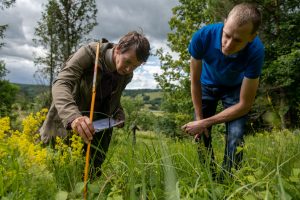
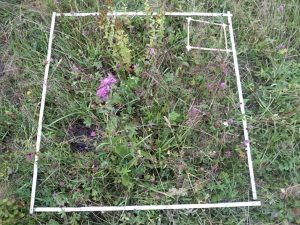
Studies of invertebrates were performed in 41 locations, on 150 hectares. Bird studies have been carried out in grasslands that are important habitats for birds.
The information gathered during the above studies is used for elaboration of grassland restoration plans. Such plans were prepared for all project partner farms (11), for demonstration farm (1) and for restoration area where LFN is performing the restoration (1). Grassland restoration plans include detailed and specific information about habitats and nature values in the grasslands, vegetation and soil descriptions, and detailed instructions for habitat restoration. They also include an assessment of potential benefits to protected species and habitats from restoration.
Grassland connectivity model. We have developed the Version 1 of the connectivity model, based on the pre-existing data about grassland habitats on national scale that is available in various databases and data sets that were developed by IES by using Sentinel-2 satellite 2017 data. As a result of overlaying different data sets, we have obtained the grid of grasslands and ranked them in accordance to their priority for ensuring the grassland connectivity. This first Version is used for supporting the decisions on prioritising the project restoration sites. Version 2 will be built in 2022, by adding the data from nationwide habitat mapping. Different connection distance thresholds produce different results and Version 1 of the connectivity model experiments with five different thresholds, from 5 km to 100 meters. 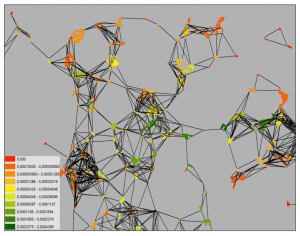 Version 1 of connectivity model
Version 1 of connectivity model
Studies about grasslands, biodiversity and business.
Two reports have been published so far:
- “Grasslands and Ecosystem Services” (in Latvian) by Baltic Environmental Forum. The report summarizes different ecosystem services that are related to semi-natural grasslands and describes the methodologies for their assessment.
- “Grasslands, Biodiversity and Business” that was written by Dr. Traci Birge from Finland. The report summarizes the information about grassland products available on the market in the Baltic and Nordic region.
Networking, transfer of knowledge. GrassLIFE is actively sharing the experience and learning from other initiatives in Latvia and EU. To date, we have attended 22 international and 24 national grassland-related events. We have also organised three Study Tours – to Ziemeļgauja protected landscape area in Latvia, to Hiiumaa in Estonia and to Abava nature park in Latvia.
Citizen science is a significant part of GrassLIFE both for involving society and scientific research.
GrassLIFE will use the nature observation portal Dabasdati.lv and create there a new section and additional functionality in order to identify wooded meadows. Restoration of wooded meadows is one of the project goals. Currently many of them are overgrown with bushes and the large old trees are hardly seen there. We will invite people to report the large trees, provide a tree species guide and a mobile app for reporting. Thus we will identify the potential wooded meadow locations.
This activity will be implemented in 2019 – 2020. Activity is implemented by LFN.
School programme for soil data collection
In this activity more than 200 pupils and teachers will become citizen scientists. They will explore nature, get to know semi-natural grasslands and learn citizen science approach for information acquisition. The collection of soil data will serve as awareness raising and data collection activity.
Teachers and pupils will collect and analyse soil samples and measure soil chemical parameters. Elaboration of soil-data collection protocols for citizen scientists as well as analyses of collected soild data will be carried out in cooperation with leading soil researchers from University of Latvia. These data will contribute to the regional grassland restoration planning and future research of semi-natural grasslands.
This programme is led by Institute of Environmental solutions.
Another aspect of grasslands is medicinal and aromatic plants that can be foraged in meadows. GrassLIFE offers to experience the diversity of semi natural grasslands by taste, creating recipes from plants. In 2021 project partner Institute of Environmental Solutions (IES) launched a recipe book "Pļava"/"Meadow". The recipes are created by a well known Latvian chef Māris Jansons. Each recipe features a story of a plant from natural grasslands and turns it into a culinary innovation.
The book in English and Latvian is available here: http://kest.lv/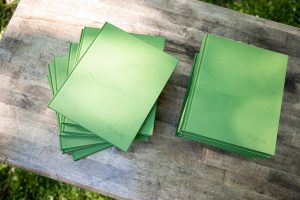
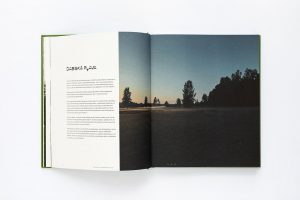
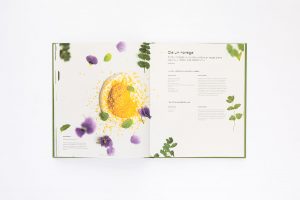
Art exposition on grasslands and medicinal plants
GrassLIFE will create an audio visual journey – interactive exhibition on grasslands and plants. The goal of the exhibition is to join the messages of nature conservation and culture and art to make them more powerful. The exhibition will be set up in Cēsis.
Exhibition will be created by IES and will be opened in September 2021.




